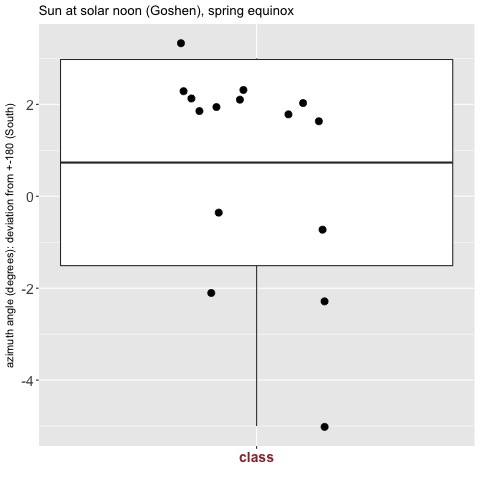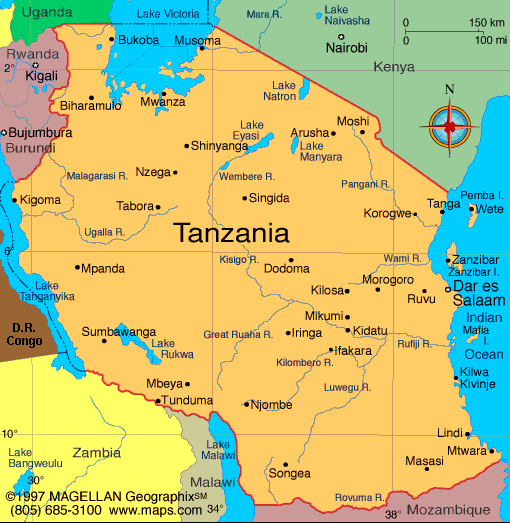Observations (almost at) the Spring equinox
...Spring equinox $\approx$ March 21
I asked you to observe the elevation angle and azimuth angle of the sun at solar noon on a day pretty close to the spring equinox.

$\color{red}\alpha$ is the elevation angle (above the horizon) and
$\color{blue}\beta$ is the azimuthal angle (angle along the horizon, away from North)
Review questions: According to that diagram...
- What is the elevation angle of an object that is straight overhead?
- What is the elevation angle of an object that is on the horizon? (For example, the setting sun).
- What is the azimuthal angle of an object that is to the North of the observer?
- To the East? To the West?
- To the South?
The seasons, and Earth's tilt
Earth's tilt and orbit>

According to this picture how is Earth positioned at the Spring equinox?
Using the side view: What elevation angle would you predict at the equinox for
- A point on the equator (latitude = 0${}^o$)
- A point on the equator (latitude = 90${}^o$)
- Goshen (latitude = 41.5${}^o$)
You found these results for the elevation angle:

Paul asked you to "compare this to Goshen's latitude". Many of you said "I was only 10 degrees off, not bad!". But perhaps it was my bad to say this should be the same as Goshen's latitude...?
Should the elevation angle be the same as the latitude? Using this picture, fill in some values in this table:

| Location | Latitude | Solar noon: elevation angle of sun |
|---|---|---|
| Equator | ||
| North Pole | ||
| Goshen, IN | 41.5 degrees |
You found these results for the azimuth angle:

Paul asked you to "compare to the Earth's tilt" at this time of the year.
That next week, Paul was in Arusha, Tanzania. Predict what elevation angle, and what azimuthal angle he observed for the sun at solar noon.

Actual values: elevation angle 84 degrees, azimuthal angle -3 degrees.
See also: